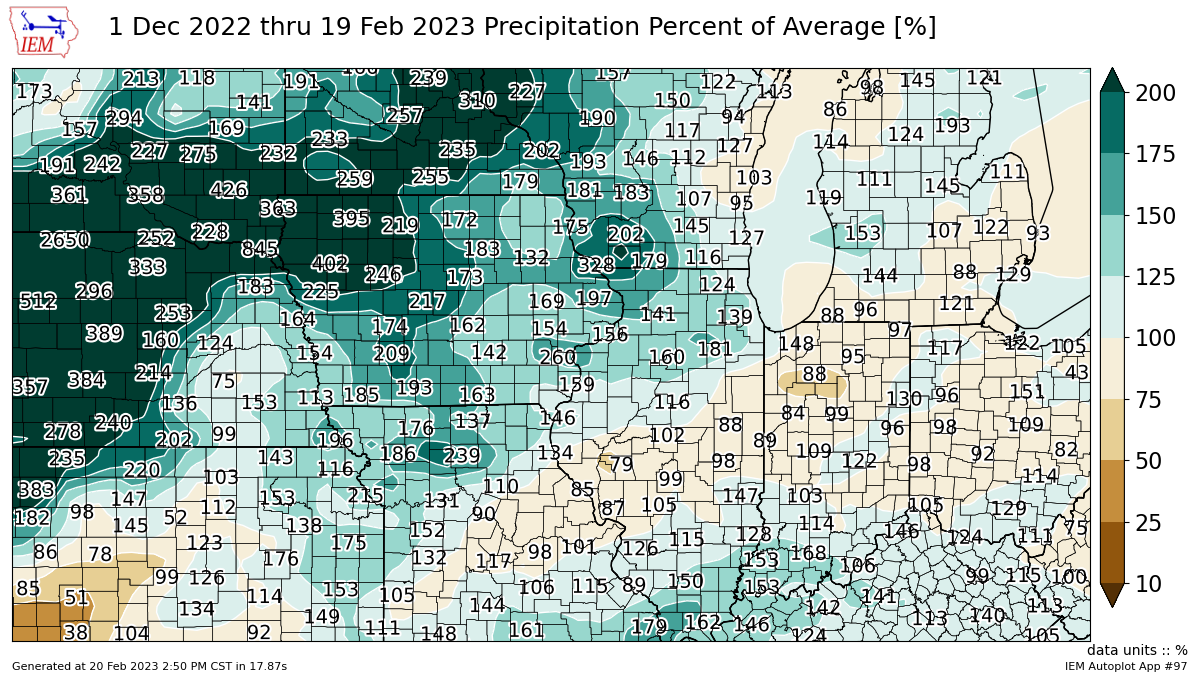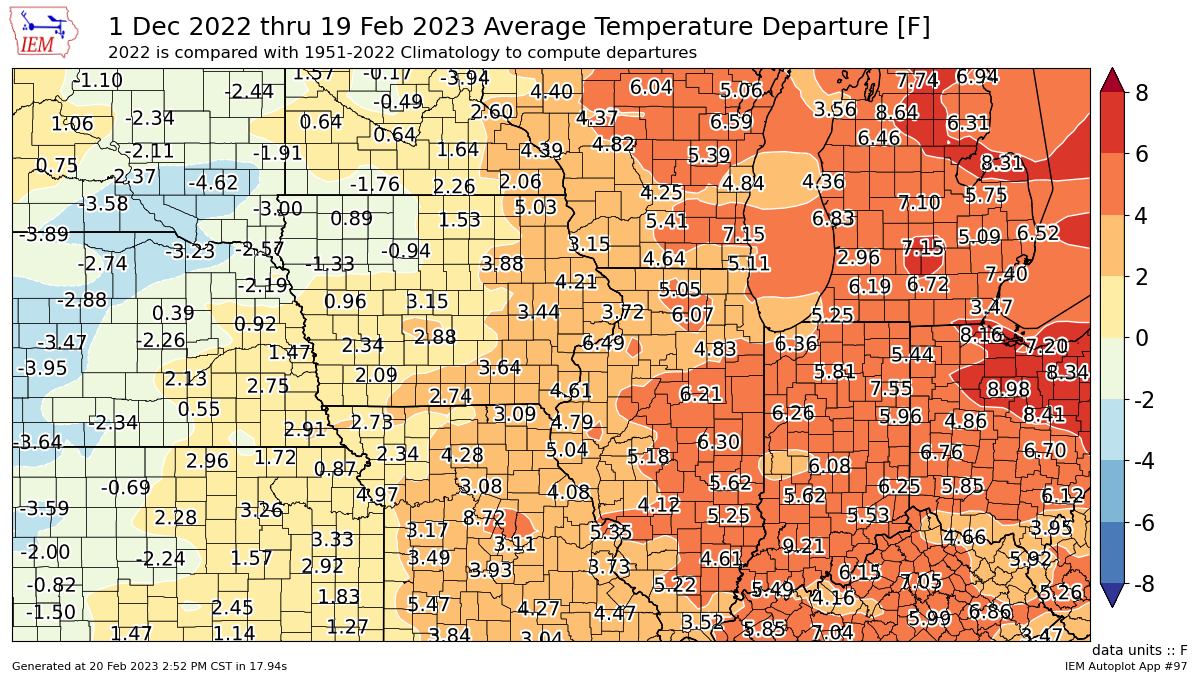Winter 2022-2023 has brought us precipitation ranging from below average in our southern regions to more than 3 times above normal in our northern corn growing areas. With varying precipitation totals and below to above average temperatures, what does this mean for pest pressure in 2023? Unfortunately, there is no easy answer, and it will depend on which specific insects we are discussing and other weather-related factors.
Winter Survival
Insects are cold-blooded and are reliant on their environment for warmth. Despite this, many insects are able to survive cold climates through production of anti-freezing agents, overwintering in a protected environment such as plant debris or the soil itself, or a combination of both.
When winter temperatures become colder than normal it seems likely that we would expect below average pest pressure for the following growing season, or above average pest pressure during a warmer than normal winter. Unfortunately, neither of these situations present a definite answer and each pest needs to be assessed individually depending on location of overwintering, tolerance to cold temperatures, and climate conditions of the overwintering environment.
Southern Strategy
One of the best ways to survive extreme cold conditions is to overwinter in the south and avoid these conditions. This is the primary mechanism of survival for corn pests such as:
- Armyworm
- Black Cutworm
- Corn Earworm
These pests do not survive Midwestern winters and must migrate north from the southern states each year in order to feed on our Midwestern corn acres. In years where southern states experience below normal temperatures, it may lead to lower survival rates and/or delayed migration to the north.
Overwintering in a Midwest environment
In general, these corn pests are well adapted to overwintering in a colder environment. Below average winter temperatures can have an effect on survival of these pests, but snow cover provides insulation which protects against exposure to cold temperatures. Common corn pests that overwinter in the Midwest include:
- Corn Flea Beetle
- Stink Bugs
- Grubs and Wireworms
- European Corn Borer
- Corn Rootworm
Flea beetle and stink bugs
These two pests overwinter above ground in protected or grassy areas and can be susceptible to extreme cold temperatures. Although they are corn pests, they rarely cause significant yield damage to corn in the Midwest.
Grubs and Wireworms
Grubs and wireworms find safety below the frostline. If winter conditions allow the frostline to penetrate deeper than normal, survival can be negatively affected.
European corn borer
Corn borer overwinters in corn stalks and residue. Cooler than normal temperatures can negatively impact survival if snow is not present to buffer against extreme cold temperatures.
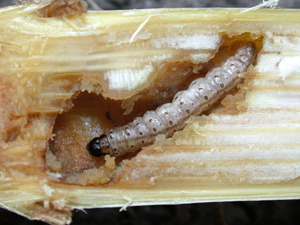
European corn borer overwinter as full-grown larvae in corn stalks or other plant residue. Photo credit: Purdue University; J. Obermeyer
Corn rootworm
Corn rootworm eggs overwinter in the soil. Studies have found that western CRW eggs can survive extended periods of exposure down to 14°F. The Midwest commonly experiences air temperatures at or below this during the winter months, but the key is to think of the soil environment. Residue, egg depth, and snow cover all play a role in buffering soil temperatures and usually keep the environment conducive to egg survival. Colder temperatures may affect shallower placed eggs, but keep in mind most eggs are deposited where soil moisture is present, with the bulk of egg laying taking place between 4-6 inches.
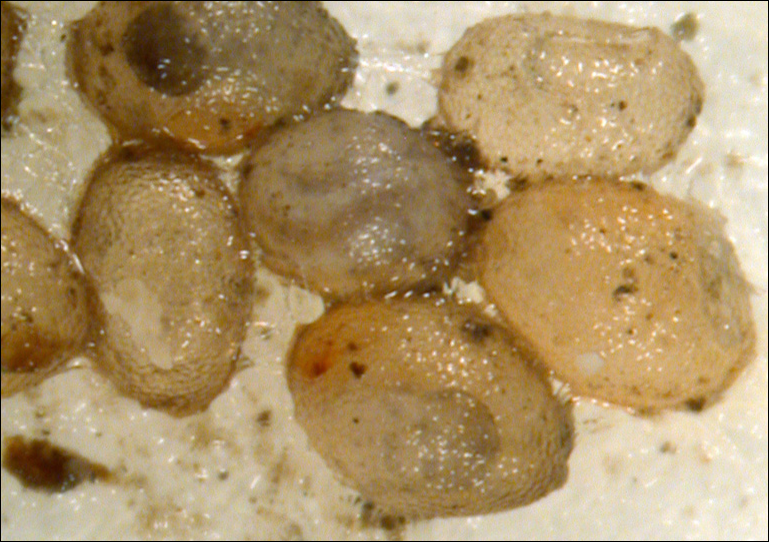
Corn rootworm overwinter as eggs in the soil. Photo credit: Purdue University
What about 2023?
Northern Regions
Temperatures have so far shown to be slightly colder than normal but we have also experienced above average snowfall/precipitation. Despite the colder temperatures, heavy snow cover in these environments has actually inhibited frost development in many areas below the snow pack. This provides a good environment for pests that do overwinter in these areas and it is likely that we could expect normal pest pressure of these insects for the growing season of 2023.
Southern Regions
Southern environments have been slightly warmer this winter and also received below average precipitation and snowfall. Above average temperatures may help winter survival; however, multiple freeze thaw cycles could have a detrimental impact on survivability. Pest pressure for 2023 in these areas will be difficult to predict and therefore reinforces the importance to scouting for pests during the growing season of 2023.
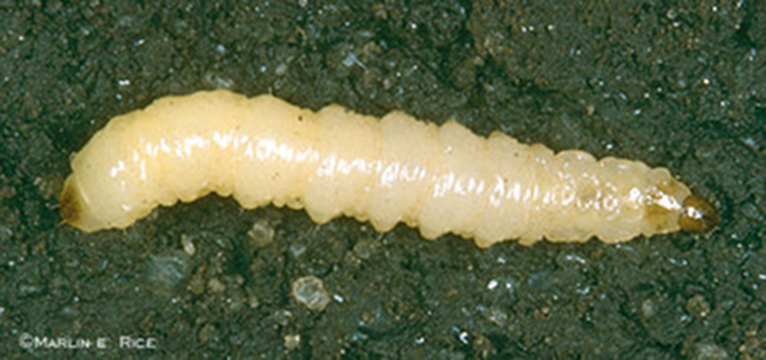
Corn rootworm larva. Photo credit: Marlin E. Rice
One exception may be areas that had above average rootworm pressure in 2022. These areas often coincided with drought and we would expect corn rootworm eggs to be laid at deeper depths in these areas. This will likely lead to sustained pressure for the 2023 growing season. The weather we should pay most attention to for CRW survival is rainfall in May to early June during hatch. Heavy rain during this time can have a big impact on CRW larvae survival.
Scouting Remains Important
As with all corn pests, scouting remains important. It’s impossible to make assumptions on the coming season’s pest pressure based on winter conditions. Although there may be pockets where a cooler than normal winter will reduce pest pressure, it will likely not be the norm especially for those major yield limiting pests (i.e., CRW). Insects that overwinter in colder climates are well adapted to do so. If CRW and corn borer pressure was elevated in previous years, expect it to remain high for the coming growing season.
This Corn Scouting Calendar can help determine the typical time to begin scouting for common insect pests.
